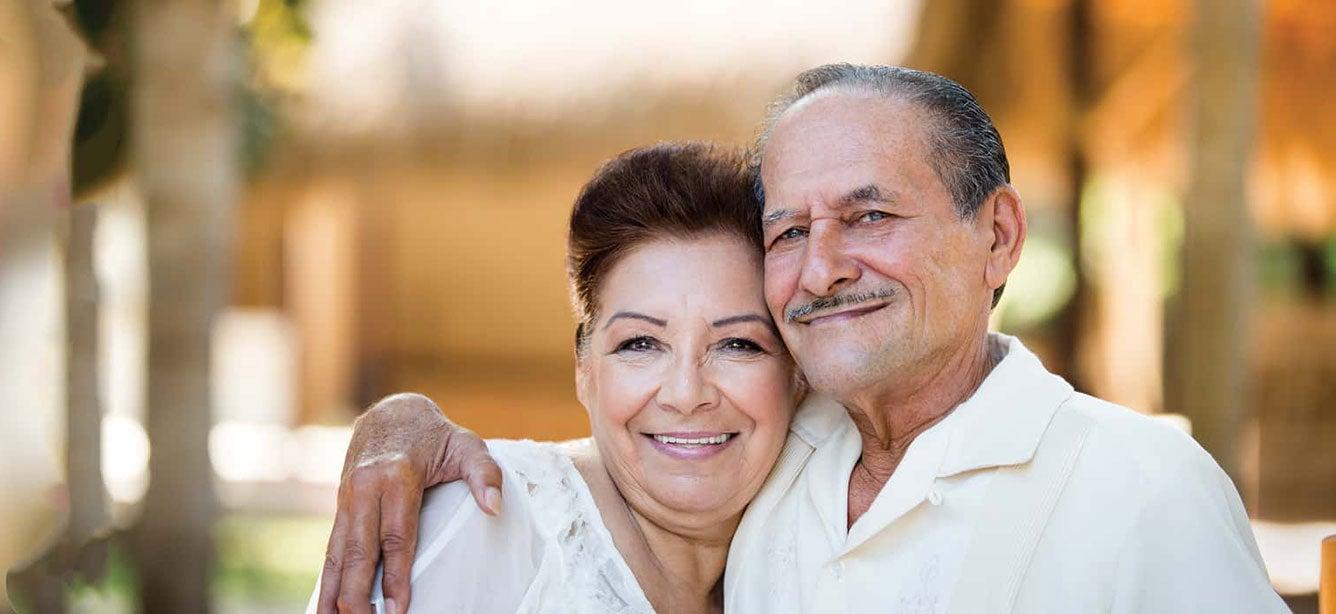
Medicaid is a public health insurance program for people with low income and limited assets. It makes medical care more accessible for eligible adults, older adults, children, pregnant women, and people with disabilities. Medicaid is not the same as Medicare, which is a federal health insurance program for adults age 65 and older and certain younger people with disabilities.
In addition to routine and acute health care services, Medicaid provides limited coverage for long-term care. This includes assisted living.
What is assisted living?
Assisted living is a home-like residential community for older adults. Residents typically live in a room or apartment but have access to shared living spaces and on-site social activities. Meals, housekeeping, laundry, and transportation are usually included in assisted living costs. In addition, trained staff is on hand 24 hours a day to help older adults with personal care tasks such as bathing, dressing, toileting, and managing their medications.
Does Medicaid cover assisted living expenses?
Medicaid does not cover the room and board part of assisted living costs.
But many states offer Medicaid waiver programs that can help defray the costs of assisted living. These are called Home and Community-Based Services (HCBS) Medicaid waivers or 1915(c) Medicaid waivers.
Medicaid waivers are designed to prevent or delay the move into a nursing home. They help cover some long-term services and supports for older adults, people with disabilities, and people with dementia. These services can be provided in a variety of settings, from adult day care centers to assisted living facilities. Nearly 1 in 5 assisted living residents (18%) depends on Medicaid to pay for daily care services.1
A Medicaid assisted living waiver may include services to help with:
- Eating
- Grooming
- Bathing
- Dressing
- Toileting
- Medication management
Other supports may include transportation, housekeeping services, and social and recreational activities.
State-by-state variations in coverage
Since Medicaid is administered by individual states, the benefits covered under assisted living waivers can vary. It’s important to find out what kinds of Medicaid waivers your state offers and what they cover. The Medicaid.gov website lists Medicaid programs by state.
Assisted living for dementia and Medicaid
Some Medicaid assisted living waivers include memory care (or dementia care). Memory care facilities offer long-term residential support specially tailored to people who have cognitive and memory challenges.
By covering some costs related to memory care, Medicaid assisted living waivers can help people with Alzheimer's disease and other types of dementia live independently for longer and enjoy a better quality of life.
Applying for Medicaid to pay for assisted living
Assessing your eligibility
To qualify for a Medicaid assisted living waiver, you must meet certain financial and functional requirements:
- Financial: States may have slightly different limits, but in general, an individual applicant cannot have income higher than 300% of the Federal Benefit Rate, which is $2,901 per month. You also cannot have more than $2,000 in assets (certain types of assets, like your primary residence, are exempt).
- Functional: Applicants must also show they have a need for the types of services provided by waiver programs—such as help with daily living activities. This determination is made through a functional assessment performed by a health care professional who works with Medicaid.
It's important to understand that even if you meet all requirements for an HCBS Medicaid waiver, you are not guaranteed this benefit. This is because these waiver programs have limited enrollment. If there are no more slots left once you become eligible, you will be put on a waitlist.
The application process for assisted living waivers varies from state to state. If your state offers a waiver program and you think you may qualify, the next step is often to apply for Medicaid itself (if you aren’t already enrolled).
How to apply for Medicaid
You must be a resident of the state where you're applying. You can apply by contacting your state Medicaid agency or through the Health Insurance Marketplace. While Medicare has specific enrollment periods, Medicaid accepts applications any time of year. Depending on the state you live in, you may be able to apply in person, by mail, via telephone, or online.
When you apply, you’ll be asked to provide documents proving your identity and income. These may include:
- Birth certificate
- Proof of U.S. citizenship or lawful residence
- Proof of residence
- Proof of income and assets
- Medicare (and other types of insurance) card
Once you receive Medicaid, you must continue to recertify (prove you’re still eligible) for benefits. In most states, this is done every year. If you apply for Medicaid but are denied coverage, you can appeal or reapply for benefits.
Finding assisted living facilities that accept Medicaid
Not all assisted living facilities accept Medicaid, and those that do may only allow a certain number of beds for people on Medicaid. In some cases, a facility may not accept Medicaid—but they may permit outside service providers to come in and provide support for Medicaid-funded residents.
To find assisted living facilities near you that work with older adults on Medicaid, reach out to your local area agency on aging or senior center. They may be able to refer you to Medicaid-approved residences nearby.
Paying for room and board in assisted living
Medicaid’s limitations
Medicaid waivers do not cover the cost of room and board in an assisted living facility. They only cover supportive benefits if you are eligible. Since Medicaid is designed for people with low income, it's understandable that older adults with Medicaid may have trouble paying the room and board portion of assisted living expenses. That’s why it’s important to consider these costs ahead of time and plan on how you’ll pay for them.
Alternative funding options
Below are some other options older adults use to fund the costs of long-term care in assisted living:
- Private funds: This can include income, personal savings, pensions, and other types of private funds.
- Long-term care insurance: Long-term care policies may cover some assisted living costs, but it depends on your policy and the specific coverage it provides. Each insurer and policy has its own rules and conditions. Be sure to do your research first.
- Veterans’ benefits: Eligible veterans may be eligible for assisted living benefits through the Veterans Administration (VA). Some facilities may be operated by the VA, while others are approved non-VA facilities.
- Other programs: Some facilities offer special financial assistance programs to help residents with limited resources pay for their assisted living costs. Also, many states provide an optional state supplement in addition to federal Supplemental Security Income (SSI) payments to make long-term care in assisted living more affordable.
Frequently asked questions
How does Medicaid differ from Medicare in covering assisted living?
Medicare does not provide coverage for assisted living costs—only eligible short-term stays in a skilled nursing facility for each benefit period. But even though Medicare does not cover assisted living expenses, it will continue to pay for all approved health care services under Parts A and B while you’re living there.
How much does Medicaid pay for assisted living?
Medicaid does not cover the room and board portion of assisted living, which makes up a large part of assisted living costs. But it may cover the cost of certain support services. This can reduce the total costs a resident pays.
How do I find out if I’m eligible for Medicaid?
The best way to see if you qualify for Medicaid is to reach out to your state’s Medicaid office or visit the Health Insurance Marketplace and answer a few questions.
Don’t be afraid to ask for help
Medicaid can help make assisted living more affordable for some older adults. But before making a decision about your future, it’s important to review all your options first. Talking to a trusted financial advisor can help you understand the process and find a long-term care solution that works for you.
Source
1. American Health Care Association/National Center for Assisted Living. Medicaid. Found on the internet at https://www.ahcancal.org/Assisted-Living/Policy/Pages/Medicaid.aspx



